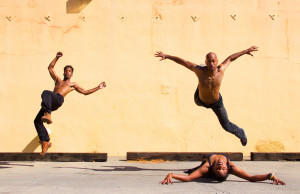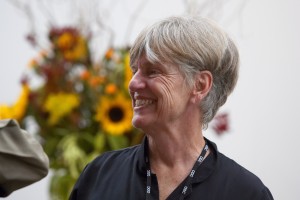
Consider what the dance scene would have been like had financial and cultural power never consolidated in New York City. Rather, what if New York had remained just another East Coast city like Boston, Philadelphia or D.C.? Without the concentration of activity in one place, the resulting dance ecology might have been more decentralized and diversified, with separate cities developing specialized strengths: a distributed network of expertise. There would be many techniques and aesthetics, and dedicated students would seek out the opportunity to study all of them.
The reality is that for better or worse, New York City has been the center of dance in the United States for the past century, tied, I would argue, to the city’s financial influence and cultural capital. But economic tides are shifting and recent events have shaken our faith in the financial market that drives New York. National attention has turned to Silicon Valley and San Francisco, which is emerging as one of many economic beacons after our falling out with Wall Street, and is perhaps the easiest contrast to New York due to existing pluralistic, anti-institutional attitudes. San Francisco is now the most expensive city in the U.S. (cost of living is 54.3% above the national average according to Forbes1) and an increasingly desirable destination for young creatives. The city has become the fastest growing large county in the United States with employment increasing at three times the national growth rate(source: Ted Egan, San Francisco City Controller’s Office2). With this economic boom comes increased cultural visibility.
This August ODC launches Next Moves, a summer intensive with a distinctly West Coast perspective. Capitalizing on popular desire to experience San Francisco, Next Moves is designed to connect aspiring dancers to practicing artists in the professional world. The program offers three separate tracks along which students can guide their exploration: Contemporary/Composition, American Cultural Forms and Dance Thinking, as well as a wealth of elective courses. In addition to the educational programs, the intensive will overlap with the Music Moves Festival at ODC Theater, offering workshop participants the chance to examine the relationship between music and dance through performances and conversation.
At its heart, Next Moves celebrates the vitality of West Coast dance. The faculty and performing artists engaged by the intensive and Music Moves festival represent important voices from the Bay Area community including Margaret Jenkins, Janice Garrett, Joe Goode and ODC Artistic Director Brenda Way. The American Cultural Forms track features jazz, tap and street dance masters ranging from Bill Irwin to Rashad Pridgen and Nicole Klaymoon. Participants in the Dance Thinking module will have the opportunity to view and respond to work by ODC/Dance, Joe Goode Performance Group, Dance Heginbotham (West Coast debut) and Kate Weare Company (NYC), among others.
By now ODC’s (originally called the Oberlin Dance Collective) relocation to San Francisco from Ohio in a yellow school bus is one of the creation legends of our contemporary San Francisco dance scene. Brenda Way and colleagues were drawn to the opportunity and openness of the West, choosing to challenge the belief that a dance company must be located in New York to be important and successful. ODC envisions Next Moves as a dance festival on the scale and importance of Jacob’s Pillow or the American Dance Festival—a destination for serious dancers to invest in training and artistic development in conversation with significant artists of our time. And there’s still a playfully rebellious attitude: ODC Theater Director Christy Bolingbroke is asking applicants for the Dance Thinking track to re-write the history of U.S. dance without New York City at the center (plagiarize the first paragraph of this article at your own risk!).
ODC has always wanted it all—collaboration, artistic excellence, boundary breaking interdisciplinary exploration, community building, leadership—and with Next Moves, they are providing an unparalleled opportunity to access the resources of their organization, while also highlighting the Bay Area dance community at large. In this pluralistic spirit, the curriculum embraces a broad definition of dance, encompassing a range of techniques, traditions and motivations from the rigor and technical virtuosity of contemporary concert dance to the integrity of American vernacular forms. ODC aims to give dancers and arts professionals the skills they need to succeed in today’s artistic climate, focusing on providing a breadth of resources, artistic exposure and professional networking opportunities. The program is “a chance to learn how to land on your feet” in today’s complex dance world, according to ODC Artistic Director Brenda Way.

So what are the opportunities for participants?
Building off the structure and momentum of past years’ “INSIDE ODC: Summer Audition Workshop,” the Contemporary/ Composition track offers the chance to train in ballet and modern technique in the mornings and be immersed in repertory and composition workshops in the afternoons, providing exposure to internationally recognized artists from the ODC/Dance company as well as the ODC Theater resident artist pool and beyond. Embracing a diverse range of students and training approaches beyond a traditional conservatory model, Next Moves provides participants with the opportunity to forge their own path.
American Cultural Forms covers the technique and lore of American dance forms including bebop, tap, jazz, hip hop and street dance. These forms were selected for their distinctive American roots and their global impact. The program is structured with technique classes in the mornings and workshops in the afternoons, which allow participants to dive into topics ranging from compositional strategies specific to these forms, the embodiment of rhythm across many techniques and physical characterization led by Bill Irwin.
The Dance Thinking module is designed to attract current and future dance performers, administrators, journalists and curators. Participants will have the opportunity to hone their dance technique in morning classes, while devoting the afternoon sessions to a seminar course surveying issues in contemporary performance. The course will give students access to curators and presenters in the Bay Area as well as the artists involved in the Music Moves Festival. Sessions will focus on shaping the dialog around dance and performance to provide a bridge between artists and audiences.

All students will have the option to take additional elective courses ranging from partnering, improvisation, beginning tap, vogue and tone and salsa. Chris Black will also be leading a performance workshop to create new work on any interested workshop participants. ODC School Director Kimi Okada believes the electives will encourage cross-pollination among the different tracks and help participants look holistically at their dance training. “We are trying to build a complete dancer,” she says.
Next Moves will also include a number of dance company auditions open only to workshop participants. At the time of this article confirmed companies include ODC/Dance, Robert Moses’ KIN, Joe Goode Performance Group, Nicole Klaymoon’s Embodiment Project and Amy Seiwert’s Imagery. These closed-door auditions give artistic directors access to new talent and offer dancers the chance to launch a professional career.
If Next Moves is ODC’s next move, where are they heading?
The curriculum for Next Moves might be the seed for a MFA program, according to Bolingbroke, bringing ODC full circle back to their beginnings in academia at Oberlin College. More immediately, Next Moves can be seen as the most recent step in ODC’s expansion as an educational, curatorial and community building force. The intensive and Music Moves festival are two of the largest ventures undertaken by the organization in recent years, highlights of which have included the opening of the ODC Dance Commons in 2005 and the unveiling of the renovated theater in 2010. ODC is known as a formidable entrepreneur, and Next Moves offers the organization a way to increase its visibility and reach a larger constituency of aspiring artists. The program extends an invitation to come West and experience an intense orientation to dance and performance in the San Francisco Bay Area.
This article appeared in the May 2014 issue of In Dance.

